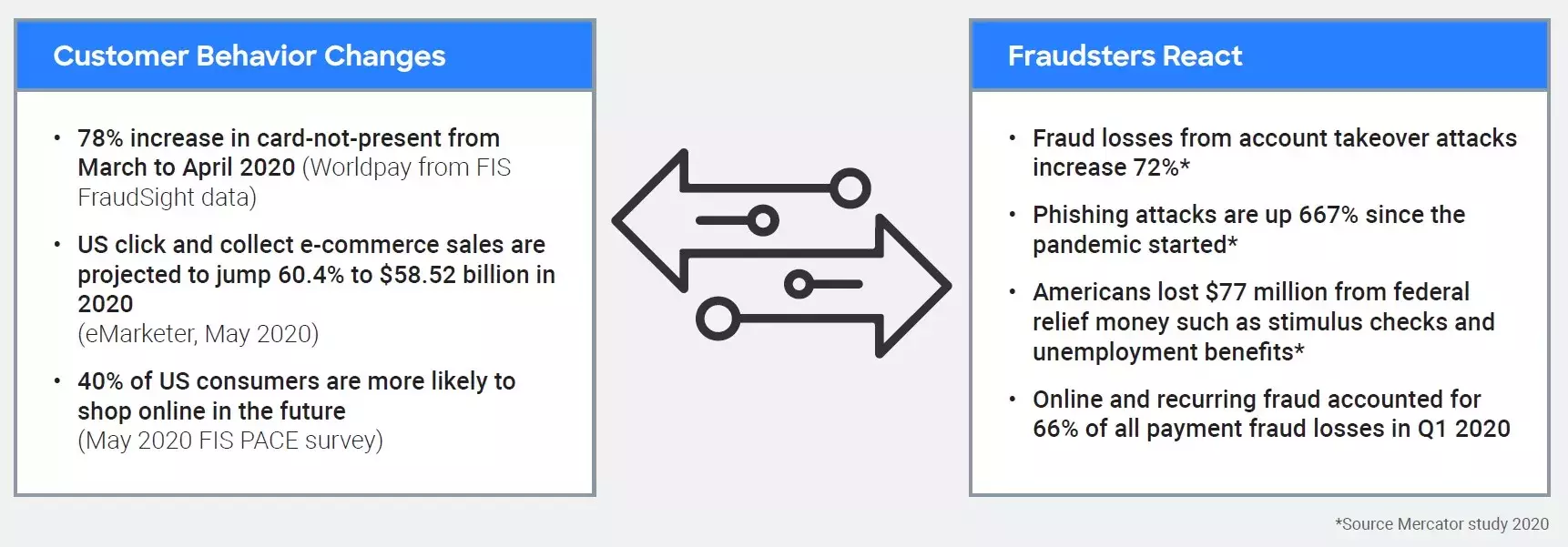COVID-19 Checklist for Banks: 6 Changing Fraud Patterns
As consumer spending patterns change in the pandemic, fraudsters are changing to match

The FICO Advisors team of consultants has just published our third COVID-19 bulletin to help banks adapt and thrive in these unprecedented conditions. Here are our observations on changing fraud patterns.
A consequence of the economic downturn is the blurring of lines between fraud and risk. It is now less clear whether a customer has obtained credit with no intention to repay for fraudulent reasons, or whether they have fallen on hard times through unemployment or other financial pressures. A review of how you define first-party fraud, treat suspicious behavior, and engage with customers is essential.
Both genuine customers’ and fraudsters’ behavior continues to change and adapt to a constantly changing environment. Fraud detection strategies need to adapt, too. Trends to think about include:
- The continuing move from card present to card not present (CNP) transactions
- The high-risk CNP mix has changed; airlines, travel, hotels, and entertainment no longer pose the same level of risk
- Increased contactless/token usage and transaction spend limits
- Increased genuine home-based insurance claims, as people spend more time at home and conduct home improvement projects
- Shift in the channel mix, resulting in more online/mobile registrations and usage
- The expedited move to digital interactions means less face-to-face interaction, less identity document validation opportunities and increased pressure in making quick and frictionless decisions. How can you continue to detect fraudulent activity while not negatively impacting the overall customer experience?
As shown below, these changes in customer behavior are driving changes in fraud patterns.

Want to learn more about responding to the pandemic challenge? Read our full bulletin: Coping with the COVID-19 Crisis: Adapting to the New Reality.
Popular Posts

Business and IT Alignment is Critical to Your AI Success
These are the five pillars that can unite business and IT goals and convert artificial intelligence into measurable value — fast
Read more
FICO® Score 10T Decisively Beats VantageScore 4.0 on Predictability
An analysis by FICO data scientists has found that FICO Score 10T significantly outperforms VantageScore 4.0 in mortgage origination predictive power.
Read more
Average U.S. FICO Score at 717 as More Consumers Face Financial Headwinds
Outlier or Start of a New Credit Score Trend?
Read moreTake the next step
Connect with FICO for answers to all your product and solution questions. Interested in becoming a business partner? Contact us to learn more. We look forward to hearing from you.
